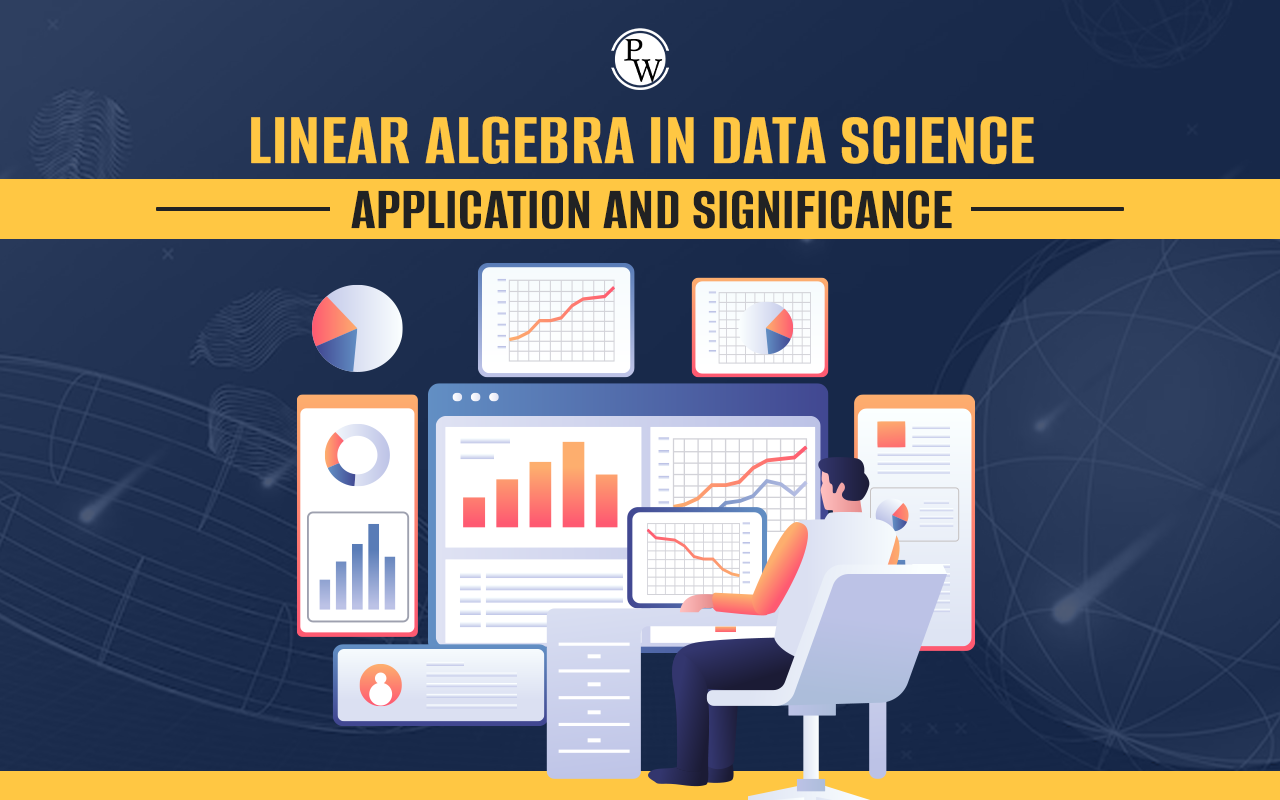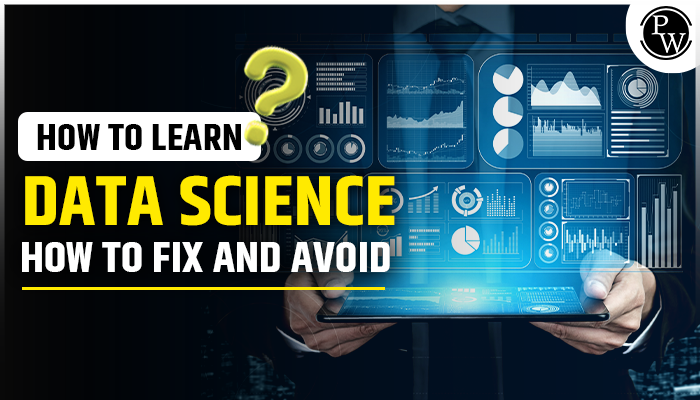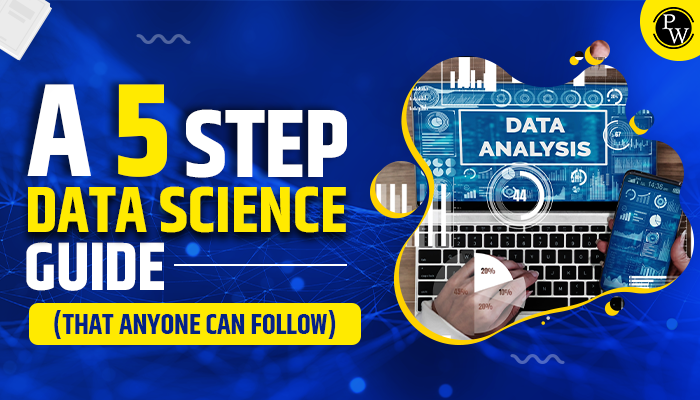Linear algebra is like a special math that deals with straightforwardly combining numbers. We use columns of numbers called vectors and grids of numbers called matrices. Think of it as the sidekick to Data Science’s superhero, helping in important ways.
Linear algebra is a big deal in machine learning, especially in things like computer vision and understanding human language. You see, many intelligent computer programs and their data are represented as grids of numbers. Linear algebra helps us make sense of all this data and do cool things with it.
Imagine you have a bunch of building blocks (like vectors), and you can stack them in different ways (that’s matrices). Linear algebra helps us figure out how to build things and make predictions.
It’s not just for computers, though. People in physics and engineering use it to understand things like lines, planes, and how stuff moves. It’s a powerful tool that helps us better understand the world around us.
So, in a nutshell, linear algebra is all about playing with numbers in a special way to solve problems and understand the world.
Significance of Linear Algebra
When it comes to data science, linear algebra is a big deal. It’s like the foundation upon which machine learning is built. Let’s break it down.
Imagine you have a picture of an adorable dog. Recognizing it is easy for us humans, but it’s a bit tricky for computers. That’s where matrices come in.
In simple terms, a picture comprises tiny little dots called pixels. Each pixel has a brightness level. Think of it like a grid, each square representing one pixel’s brightness. This grid is like a matrix, with each square holding a number that tells the computer how bright that pixel should be.
Now, linear algebra helps us do all sorts of things with these pictures. We can make them bigger or smaller, cut out parts we don’t need, and more. It’s the backbone of deep learning and machine learning, which are fancy ways of teaching computers to understand and do cool stuff with data.
So, when you dive into linear algebra, you learn the secret language that helps computers see, understand, and manipulate images and data.
How is linear Algebra Used in Data Science?
Linear Algebra in Data Science: What You Need to Know
Linear algebra is like a toolbox data scientists use for many important tasks. Let’s see how it works:
Data Representation: Consider your data like a big table with rows and columns. Each row is something you’re looking at, and each column is a characteristic of that thing. This setup makes it easy for computers to understand and work with data.
Matrix Magic: We can do cool stuff with linear algebra with these tables. We can add, multiply, or flip them around. This helps us find similarities between things, change how data looks, and solve problems.
Simplifying Data: Sometimes, data is complicated. Linear algebra helps us simplify it without losing important information. It’s like cleaning up messy data.
Making Predictions: Linear algebra is also behind linear regression, a way to determine relationships between things and make predictions. It’s like using math to predict the future.
Machine Learning Tricks: Many machine learning tricks, like support vector machines, use linear algebra to build models and sort information into categories.
Image and Signal Magic: When you work with images and signals, linear algebra comes in handy. It helps us sharpen pictures, make them smaller, and find edges. It’s like using math to make images look better.
Getting the Best Answers: Linear algebra helps us find the best answers to complex problems, especially when trying to improve things step by step.
Spotting Patterns: It also helps us find patterns and essential directions in data. This is useful for grouping similar things, picking out important features, and making data easier to understand.
Visualizing Data: Sometimes, we have lots of data, and it’s hard to picture. Linear algebra helps us make pictures that show the important stuff even when a lot is going on.
Solving Problems: Finally, linear algebra is a secret weapon for solving problems with lots of equations. This is handy when trying to find the best solution to tricky challenges.
So, when working with data, remember that linear algebra is like your trusty toolkit.
Recommended Course
- Decode DSA with C++
- Full Stack Data Science Pro Course
- Java For Cloud Course
- Full Stack Web Development Course
- Data Analytics Course
Application of Linear Algebra in Data Science
Linear Algebra in Data Science: Where It’s Used Linear algebra is like a superhero that helps data scientists in many different areas:
Machine Learning: It’s the secret sauce behind predictive models like linear and logistic regression and support vector machines that make predictions and classify things.
Simplifying Data: Sometimes, data has too many parts. Linear algebra helps simplify it without losing the important stuff. Think of it as decluttering data.
Image Magic: When computers need to recognize images, they use things like convolutional neural networks (CNNs). These rely heavily on linear algebra to spot shapes and patterns in pictures.
Understanding Words: In natural language processing, computers use linear algebra to understand words and how they relate. It helps with things like language translation.
Recommendations: You know how Netflix suggests movies you might like? That’s called collaborative filtering, and it uses linear algebra to make those suggestions based on what you and others watch.
Making Data Simple: Sometimes, we have tons of data, and making sense of it is hard. Linear algebra helps by turning it into simpler pictures in 2 or 3 dimensions that show what’s important.
Grouping Things: When we want to combine similar things, like grouping similar customer preferences, linear algebra helps with methods like K-means clustering.
Signals and Sounds: Linear algebra helps signal processing, like turning sounds into digital data and analyzing them. It’s how music streaming services work, for example.
Finding the Best: In data science, we often want the best solution, and linear algebra is our guide. It helps us find the best answers step by step.
Finance and Money: Linear algebra is used in finance for things like managing risks, figuring out prices for financial products, and making decisions about investments.
Networks and Connections: When we study things like social networks or how things are connected online, linear algebra helps us understand the relationships between different parts.
Saving Space: Sometimes, data takes up a lot of room. Linear algebra-based methods, like Singular Value Decomposition (SVD), help us keep the important bits while using less space.
PW Skills Provide Various Platform
Frequently Asked Questions
Q1. How does linear algebra relate to linear regression?
Ans. Linear algebra is closely tied to linear regression. Linear regression is a method used to model relationships between variables using linear equations. These equations can be represented as vectors, and the data can be organized in matrices.
Q2. Can I succeed as a data scientist without a strong understanding of linear algebra?
Ans. While you can perform some data science tasks without an in-depth knowledge of linear algebra, having a strong grasp of it significantly enhances your abilities. Many core techniques, algorithms, and concepts in data science rely on linear algebra. A solid foundation allows you to comprehend, implement, and optimize models effectively, resulting in more accurate insights and predictions.
Q3. How is linear algebra used in machine learning algorithms?
Ans. Linear algebra plays a crucial role in various machine learning algorithms. Algorithms like linear regression, support vector machines, and neural networks heavily rely on linear algebra operations for tasks such as training, prediction, and optimization. Concepts like eigenvectors, eigenvalues, and matrix factorization are frequently utilized in different machine-learning strategies.
Q4. What are vectors and matrices in the context of data science?
Ans. In data science, vectors are ordered sets of numbers that represent quantities with direction. They are often used to describe features or data points. Matrices, on the other hand, are rectangular arrays of numbers where each row can represent an observation and each column a feature. Matrices are used to represent datasets, transformations, and coefficients in linear equations. They are fundamental tools for data manipulation and analysis in data science.
Recommended Reads
Data Science Interview Questions and Answers
Data Science Internship Programs





